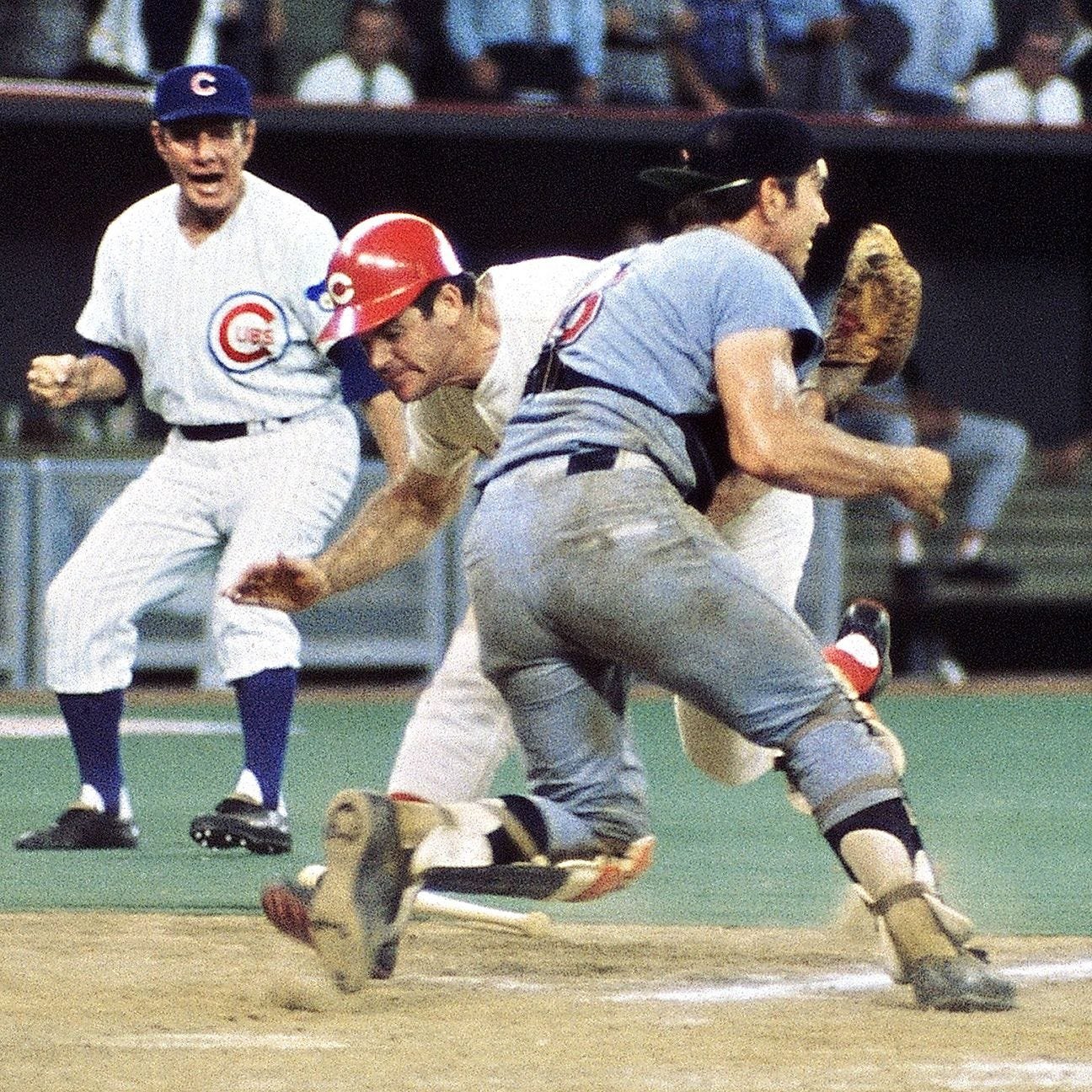Pete Rose and Ray Fosse: A Collision of Titans, Strategy, and Sportsmanship
Baseball fans, let’s take a journey back to the 1970 All-Star Game. It’s a game that has been etched into the annals of baseball history, not for a towering home run or a perfect game, but for a collision at home plate between Pete Rose and Ray Fosse that was more intense than a summer blockbuster.
The Stage is Set
Picture this: it’s the 12th inning, and the National League and American League are locked in an epic battle. The tension is so thick you could cut it with a knife. Pete Rose is on second base, and the crowd is on the edge of their seats. The next few seconds are about to become the stuff of legends.
The Infamous Collision
Here comes the main event. There’s a hit, and Rose is rounding third like a man on a mission. Fosse, the catcher for the American League, is at home plate. Now, this is where things get interesting. Fosse is blocking the plate like a secret service agent taking a bullet for the president. But here’s the thing - the ball is nowhere near him. It’s still making its way to the plate, and it’s clear it’s not going to get there in time.
Rose, seeing no path to the plate, doesn’t slow down. He collides with Fosse with the force of a freight train. The National League scores, and they win the game. But at what cost?
A Closer Look
Now, let’s hit the pause button and analyze this play. Fosse was blocking the plate, which was a common and accepted strategy at the time. But he did so knowing that the ball wasn’t going to reach him in time. He was, in essence, challenging Rose to a duel.
Rose, for his part, accepted that challenge. But here’s a detail that often gets lost in the retelling of this story. If you watch the footage closely, you can see that immediately after the collision, Rose bends over to check on Fosse. It’s a brief moment, but it speaks volumes. It shows that even in the heat of battle, there’s a level of sportsmanship and concern for your fellow players.
The Aftermath and Legacy
Fosse was injured in that collision. He suffered a separated shoulder and, though he continued to play for several more seasons, he was never quite the same.
Rose and Fosse, whose names will forever be linked by that play, handled the situation with class. They both acknowledged the intensity of the moment and the competitiveness that led to the collision. They even developed a friendship in the years that followed.
The Takeaway
This legendary play is often discussed in the context of Pete Rose and his aggressive style of play. But let’s not forget about Ray Fosse. He wasn’t just a passive participant; he was a competitor who made a strategic decision to block the plate. He knew the risks and was willing to take them for the sake of the game. That’s the kind of grit and determination that defines baseball.
As for Pete Rose, that play epitomized the way he approached the game. He played with a relentless intensity, always giving 100%. But that brief moment when he checked on Fosse showed that beneath the tough exterior was a player who respected his opponents and the game.
In the years since that collision, the rules of baseball have changed. The MLB has implemented new regulations to reduce the risk of collisions at home plate. This is in part a recognition of the need to protect players from injuries.
However, the collision between Pete Rose and Ray Fosse remains an iconic moment in baseball history. It was a convergence of strategy, intensity, and sportsmanship. It was a reminder of the physical and mental challenges of the game.
So, as we look back on that fateful day in 1970, let’s remember it not just for the collision itself but for what it represented. Two players, each embodying the spirit of competition, clashed at home plate in a moment that would define their careers.
Let’s tip our caps to Pete Rose and Ray Fosse. In a game that was bigger than both of them, they showed us the heart, the sacrifice, and the respect that make baseball America’s pastime.
In the annals of baseball, this play will forever serve as a reminder of the thin line between victory and defeat, and the unyielding passion that players bring to the diamond.
Play ball, and may the spirit of competition and sportsmanship continue to thrive in the great game of baseball.

